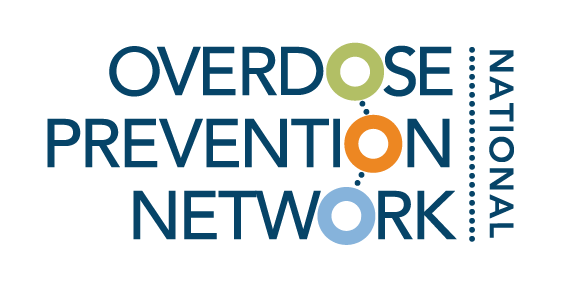
Resource Library
Toolkits, guides, and other resources vetted by experts in overdose prevention.
Filter by category and tags, or search by keyword (ex. COVID-19, harm reduction).
Fact Sheet: The Impact of the Overdose Crisis on Latinx Communities in the United States
Drug overdoses have affected all communities across the United States. Yet there are notable racial and ethnic disparities that have emerged over the past 25 years, even though people of all races and ethnicities use drugs at similar rates. Racism, lack of access to treatment and services, targeted drug enforcement, and stigma are some of the most common factors contributing to these tragic losses in our communities. DPA has developed three new fact sheets that describe overdose death trends among Black, Latinx, and Native American communities. They also provide policy recommendations and strategies for how our elected officials can save lives.
Fact Sheet: The Impact of the Overdose Crisis on Black Communities in the United States
Drug overdoses have affected all communities across the United States. Yet there are notable racial and ethnic disparities that have emerged over the past 25 years, even though people of all races and ethnicities use drugs at similar rates. Racism, lack of access to treatment and services, targeted drug enforcement, and stigma are some of the most common factors contributing to these tragic losses in our communities. DPA has developed three new fact sheets that describe overdose death trends among Black, Latinx, and Native American communities. They also provide policy recommendations and strategies for how our elected officials can save lives.
Fact Sheet: The Impact of the Overdose Crisis on Native American Communities in the United States
Drug overdoses have affected all communities across the United States. Yet there are notable racial and ethnic disparities that have emerged over the past 25 years, even though people of all races and ethnicities use drugs at similar rates. Racism, lack of access to treatment and services, targeted drug enforcement, and stigma are some of the most common factors contributing to these tragic losses in our communities. DPA has developed three new fact sheets that describe overdose death trends among Black, Latinx, and Native American communities. They also provide policy recommendations and strategies for how our elected officials can save lives.
Preventing Overdose and Reducing Drug-Related Harm Policy and Implementation Guides for State and Local Change
ChangeLab Solutions has developed guides that offer a range of evidence-based policy strategies and a roadmap to policy implementation that can advance equity and prioritize care over punishment for people who use drugs. The strategies are intended to support state and local decision makers, government agency staff, public health practitioners, and community members in considering policies to prevent overdose and reduce other drug-related harm in their communities.
COPN Accelerator 4.0 Case Studies: Health Equity Strategies in Overdose Prevention
What steps can communities take to incorporate health equity in overdose prevention? The following summary provides concrete examples of thoughtful approaches to applying health equity in overdose prevention at the local level to address rising rates of overdose. Case studies were drawn from overdose prevention coalitions participating in the California Overdose Prevention Network (COPN) Accelerator 4.0 Program. These can serve as models for other coalitions and organizations across the country.
COPN Accelerator 4.0 Program: Key Considerations for Centering Equity in Overdose Prevention
This handout provides the key considerations for centering equity in overdose prevention based on Dr. Lauren Powell's presentation to the COPN Accelerator 4.0 Coalitions.
Training and Educating Public Safety to Prevent Overdose Among Black, Indigenous, and People of Color Communities
To better understand the training and education needs of public safety personnel related to preventing overdose in BIPOC communities, and to inform the development of future trainings, the National Council, with the support of the CDC, conducted an environmental scan that included a literature review and a series of key informant interviews and roundtables. The key findings from these activities are explained in this guide.
Talking about Health Equity
Among the general public, the term equity isn’t widely understood. FrameWorks researchers have found that most people associate the term with financial topics, as in home equity or equity in a business. For communicators, this means that if you’re using the term, it’s vital to pair it with a clear explanation. Use this resource to help you with framing your message around equity.
Explaining the Social Determinants of Health
Public health experts use the term “social determinants of health” to refer to the idea that non-medical factors such as geography, income, and education have a significant effect on health. However, communications researchers have found that this term doesn’t make sense to the average person. What’s more, the phrase can even leave mistaken impressions that the “social determinants of health” has something to do with socialism or a belief that people lack free will. Use this resource to understand and help others understand the social determinants of health.
Taking Action on Racial Equity in Drug User Health Programs E-Course
This action-oriented e-course supports organizations to make racial justice and equity work part of their day to day values and practice designed specifically for organizations and providers working with people who use drugs.
Ruchika Tulshyan: Creating Purposeful Spaces of Inclusion and Belonging
In this fireside chat, Ruchika Tulshyan and Melody Barnes (Aspen Institute Forum for Community Solutions) discussed practices that can support and operationalize inclusive, equity-centered collaborative cultures. They also shared about the importance of elevating the voices of women of color and those historically underestimated within collaborative work.
LGBTQ+, Family & Substance Use Resources
The Partnership to End Addiction has created multiple resources for parents or caregivers on how to show acceptance, support for LGBTQ+ youth who have substance use disorders..
Research Brief: Substance Use and Suicide Risk Among LGBTQ Youth
This brief from 2022 provides information on substance use and suicide risk among LGBTQ youth and provides recommendations based on the data on how to support LGBTQ youth.
SAMHSA Resources for Lesbian, Gay, Bisexual, Transgender, Queer, and Intersex (LGBTQI+)
SAMHSA compiled a list of resources for individuals and providers that includes national survey reports, agency and federal initiatives, and related behavioral health resources.
Faces & Voices of Recovery: LGBTQ+ Recovery Resources
According to the Recovery Research Institute, it is estimated that 30 percent of LGBTQ+ individuals face some form of addiction, compared with 9 percent of the general population. However, there is a lack of LGBTQ+ recovery resources. Faces & Voices of Recovery have created a list of LBGTQ+ focused recovery resources.
Impact of the California Harm Reduction Initiative
In this article, it provides insight into the large impact of the California Harm Reduction Initiative across the state of California.
Do No Harm Guide: Applying Equity Awareness in Data Visualization
Through rigorous, data-based analysis, researchers and analysts can add to our understanding of societal shortcomings and point toward evidence-based actions to address them. But when data are collected and communicated carelessly, data analysis and data visualizations have an outsized capacity to mislead, misrepresent, and harm communities that already experience inequity and discrimination. This guide and its associated toolkits focus on how data practitioners can approach their work through a lens of diversity, equity, and inclusion.
One Graph or Many: Taking an Equity Lens When Visualizing Data by Race
For many data communicators, presenting data disaggregated by race or ethnicity can pose a tricky problem. It’s not uncommon to place the data for each group in a single graph, but this presentation can lead the reader to compare the performance of each group to the best performing group, creating a “horse race effect.” As a result, a reader may negatively perceive the experiences of one group relative to another.
Key Considerations for Applying an Equity Lens to Collaborative Practice
This brief helps collaborative teams formally assess existing policies to determine whether, and to what extent, they contribute to disproportionate and disparate outcomes for the families being served.
Anti-Criminalization and Public Health Systems Factsheets
NASTAD, with consultant Reframe Health and Justice, created a three-part factsheet to provide information on the role of public health in addressing the impacts of criminalization and policing. The toolkit includes factsheet pages on Criminalization as a Determinant of Public Health, Abolition vs Reform, and Anti-Criminalization for Public Health Strategies.









